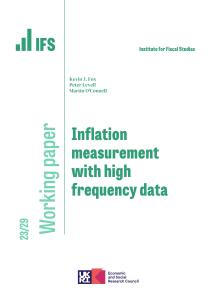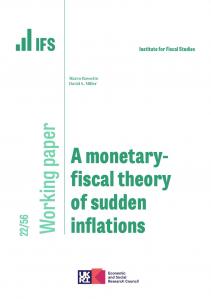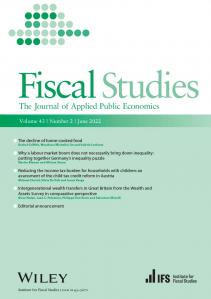Professor CEM Joad was a philosopher and regular contributor to The Brains Trust, the BBC Radio programme during the 1940s. His name comes to mind as we contemplate today the release of the latest inflation figures. I don’t think the good professor had any particular interest in inflation, but he would surely have started any response to a question about today’s inflation figures with his most famous catchphrase: “It all depends what you mean by . . .”
For today the Office for National Statistics will publish three measures of inflation. The consumer prices index (CPI), until now the headline measure and the measure targeted by the Bank of England, the retail prices index (RPI), the longest standing measure with a lineage dating back to Professor Joad’s time, and the CPI including owner occupiers’ housing costs (CPIH), which for the first time will be presented as the ONS’s preferred or headline measure.
So today is a big day. Headline inflation measures don’t change very often. Indeed until today there has been only one such change — when the CPI superseded the RPI — in all the time that regular measures have been produced. So what do we mean by inflation and how can there be more than one meaning?
What inflation as we measure it does not mean is change in the cost of living — the change in the amount of money I need to be as well off this year as I was last year. It does not, for example, take account of the fact that if the price of wine skyrockets I may buy less wine and more beer. In this sense all our measures probably overstate the increase in the cost of living. Inflation simply means the change in prices faced by consumers.
The word “simply” though is misleading. How does one understand “change in price”, let alone measure it, when completely new goods — smartphones for instance — become available? What should one do when the quality of the same goods — cars, televisions, computers — changes almost beyond recognition over time? How can a single figure account for the different spending patterns of millions of households?
Happily this is not an article about how all that does or does not happen. In fact all three of the main measures — RPI, CPI and CPIH — deal (or fail to deal) with these issues in much the same ways. So why do we have three and what do we mean by them?
Perhaps the easiest place to start is the RPI, the measure that has been knocking around for decades and which, until the late 1990s, was the only available measure of inflation. It consistently suggests that inflation is quite a bit higher than the CPI. In the year to this January for example the CPI said that inflation was 1.8 per cent while the RPI said it was 2.6 per cent. That’s mostly because the RPI is plain wrong. It has the rather unfortunate feature that if prices rise one month and then return to their original level the following month, the RPI will still show an increase in prices over the period. The ONS knows this. It has stripped the RPI of its national statistics kitemark and has warned people not to use it. Even so it continues to produce the RPI because it is so widely used in contracts, not least in index-linked gilts.
So if the RPI is no good — and let me repeat, it really is no good — what about the CPI? It doesn’t suffer from the same problems but it does have one rather glaring omission — it takes no account of housing costs for owner occupiers. That may come as a bit of a surprise given how important such costs clearly are. That omission reflects two things. First the CPI is the UK version of an inflation measure harmonised across Europe, and that measure does not include these costs. Second, that’s because it’s actually surprisingly difficult to do so in a coherent fashion. You wouldn’t believe the arguments economists and statisticians are capable of having over this.
Housing is different from other consumer goods. The purchase of a home is also partly an investment. We don’t include changes in the prices of stocks and shares in a measure of consumer price inflation, and for the same reason increases in house prices should not feature.
What the CPIH does instead is rectify the CPI’s omission by measuring the price of owning a home as the rent you would have to pay to occupy it. That is a measure of the value to you of living in the house you own. It is not ideal but it is probably the best way we have of getting a handle on the price of owner occupation in a way that allows for its inclusion in a price index. It is certainly an improvement on doing nothing — though in practice there has been very little difference between inflation as measured by CPI and by CPIH in recent years. In any case, good luck to the CPIH.
It may need a bit of luck given the government’s apparent cynicism when it comes to choosing which inflation measure to use and when. While it has, rightly, ditched the RPI for many purposes, it has mainly been the case that where doing so saves it money. Pensions, benefits and tax allowances for instance no longer rise with the RPI. But the government continues to use the RPI where a higher inflation number suits it — for increasing duties on cigarettes and alcohol, for increasing rail fares and in calculating repayments on student loans. It should stop doing so and use a more respectable measure of inflation. What the government means by inflation too often appears to be whatever happens to suit it at the time.
This article was first published by The Times and is reproduced in full here with permission.Paul Johnson is director of the Institute for Fiscal Studie – follow him on twitter @PJTheEconomist.









